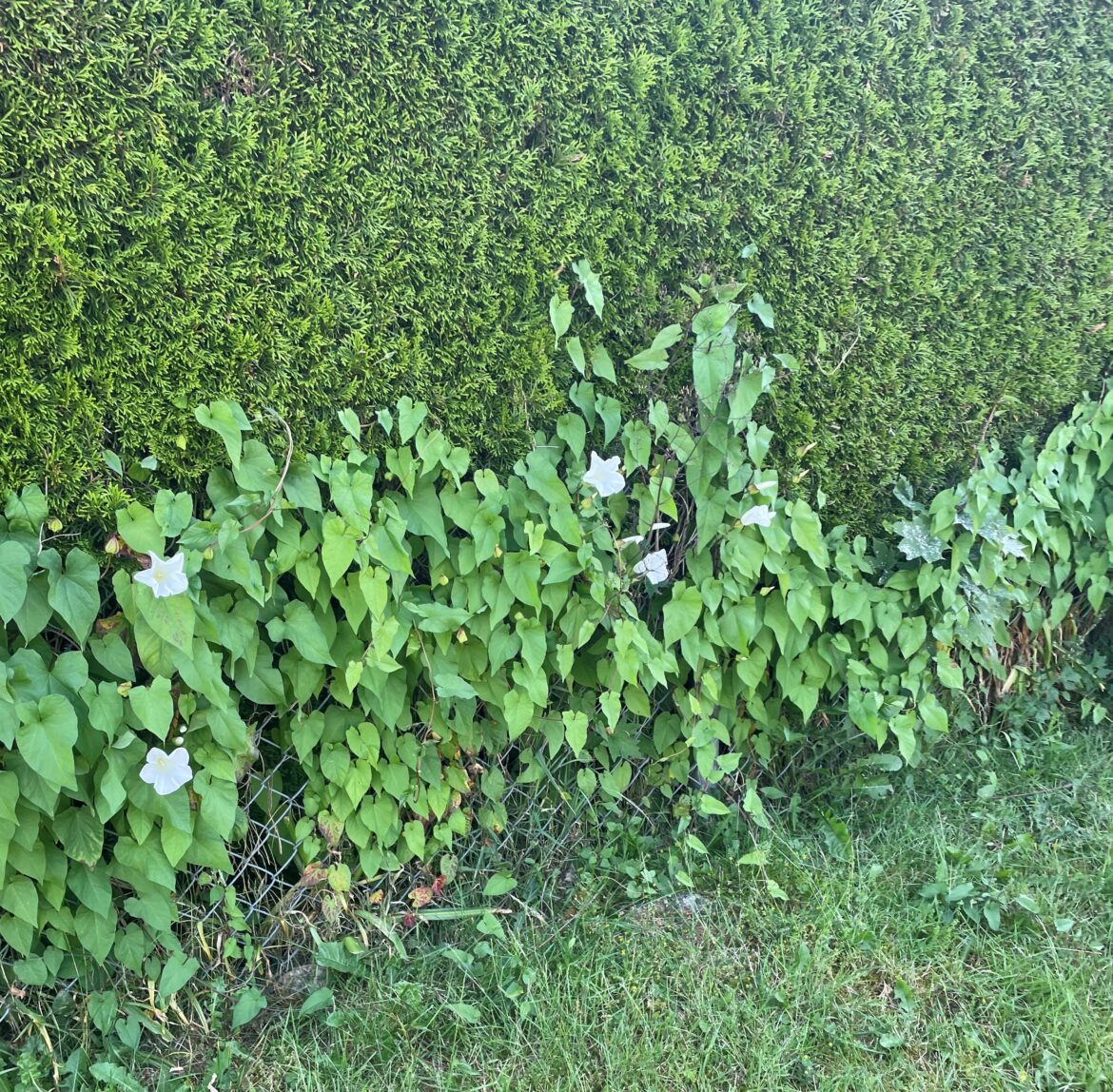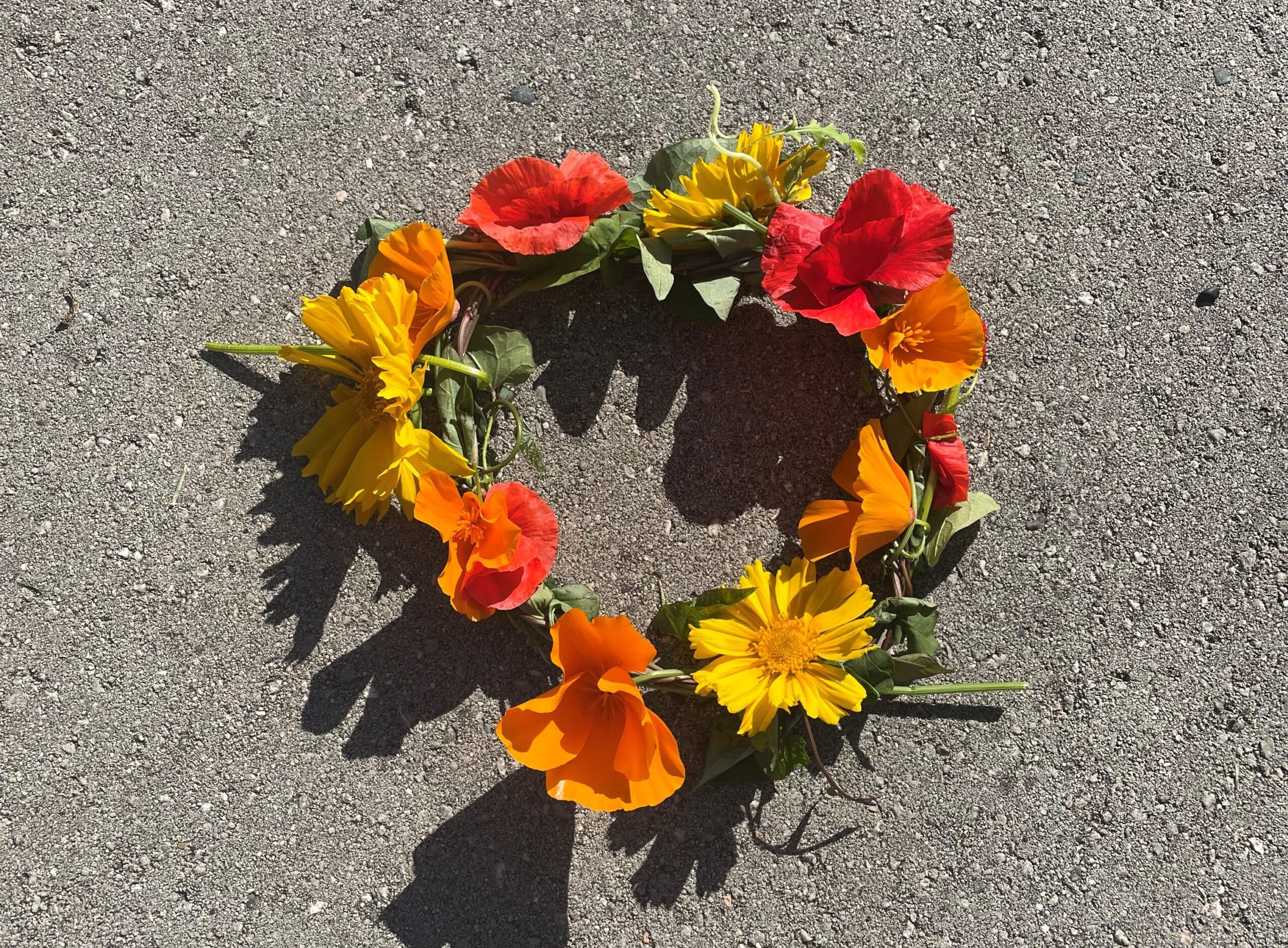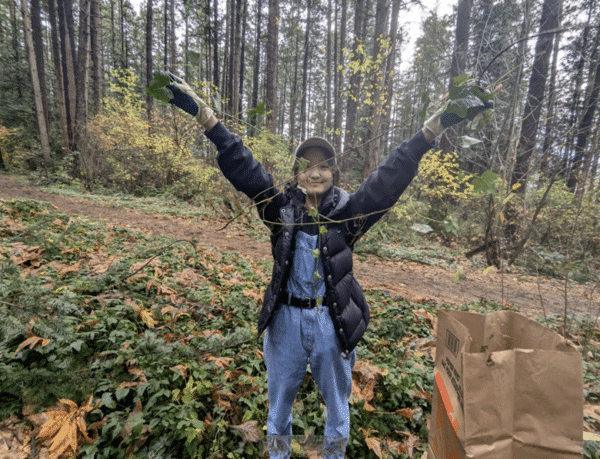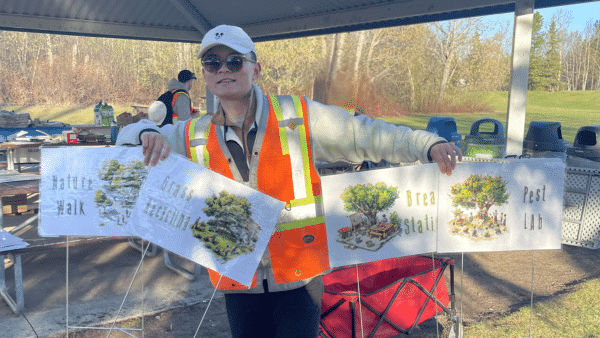By Alex Mutch| June 25, 2024
Beauty is in the eye of the beholder. Some invasive plants may be considered attractive for their esthetics or unique features. But they tend to lose their appeal when their invasive nature takes over.
This was the case for one youth whose experience with invasive species began in the garden.
Growing up, Zoha Mohammed loved activities such as hiking, fishing, and gardening. She loved playing outside, catching grasshoppers and moths in her backyard. Zoha recounts admiring a beautiful plant that just showed up every year. Left unattended, however, morning glory(Convolvulus arvensis) – also commonly known as field bindweed – began taking over the backyard and garden she was so fond of.

“My connection with this invasive species began when I used to watch it grow along the fence of our house. I thought it was beautiful with its delicate white flowers and climbing vines. Its blossoms reminded me of little cups from which you could drink water. I used to watch it grow until it covered almost the entire fence. Then winter would come, and it would retreat. When spring came each year, like clockwork, its vines began climbing up the fence again. I continued to admire it until I noticed it was taking over the garden,” said Zoha “I remember my dad and I trying to untangle the vines from our tomato plants to stop them from being suffocated. Even if a tiny bit of morning glory root was left under the soil, it was sure to return. Though morning glory is quite a pretty plant, it has its dark side.”

Zoha discovered a positive in the situation, repurposing the vines in a fun and unique way.
“The vines of morning glory are absolutely perfect for making flower crowns!” said Zoha. “It’s the best activity to do when you are done with your weeding. All you need to do is grab a vine and weave it around itself into a circle. You could even attach other flowers to make it look fuller!”

Having experienced how hard it was to remove morning glory, Zoha has a few tips for you:
“Pouring boiling water on weeds is sure to knock them out, as it acts as a contact herbicide (killing parts of the weed it contacts). A huge plus is that it comes without all the chemicals of regular herbicide! Unfortunately, it doesn’t kill deep roots, so it’s best to use it on the little baby weeds just starting to pop out of the ground,” said Zoha “If you don’t want to harm surrounding plants, some good old hand weeding will do the trick. And if you see little critters in your soil, great! The more earthworms in your soil, the healthier it is.”
She wants other volunteers to know that weeding your garden is no easy task, but the results are worth it in the end. You could even make some crowns while you are at it. Grab a hat and some gloves, and get moving!
As an important reminder for stopping the spread of invasive species, when repurposing removed invasive plants, always be careful to avoid accidently spreading any plant fragments, as it could result in new infestations.

Funded by the Government of Canada.
Financé par le gouvernement du Canada.
Alex Mutch is a youth engagement coordinator at ISCBC. He values inclusivity and strives to create equitable and inviting environments in all the communities he is a part of. In his spare time, Alex enjoys playing volleyball, hiking, reading, and solving Rubik’s cubes. You can reach Alex at amutch@bcinvasives.ca.
Share


















